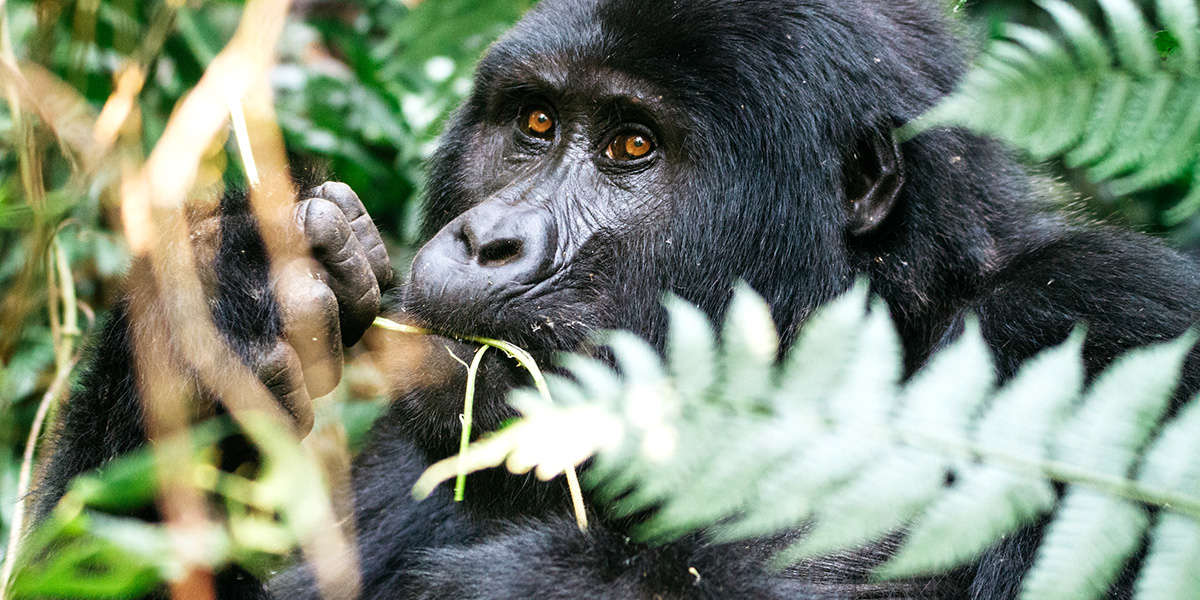

Emilie Chen / Flickr / CC BY-ND 2.0
By Jason Bittel
The news coming out of East Africa’s Virunga Mountains these days would have made the late (and legendary) conservationist Dian Fossey very happy. According to the most recent census, the mountain gorillas introduced to the world in Gorillas in the Mist, Fossey’s book and the film about her work, have grown their ranks from 480 animals in 2010 to 604 as of June 2016. Add another couple hundred apes living in scattered habitats to the south, and their population as a whole totals more than 1,000. Believe it or not, this makes the mountain gorilla subspecies the only great apes known to be increasing in number.
At first glance, 1,000 gorillas might not seem like a big deal. The International Union for Conservation of Nature still classifies the subspecies as critically endangered. Poaching and habitat destruction still threaten these giant primates with expressive faces and, as Fossey found, close-knit families. But to truly appreciate their population today, you have to go back more than half a century.
Mountain gorilla numbers were in veritable free fall during the 1960s, when Fossey began to study them closely. While she was working tirelessly to habituate the apes to her presence, livestock grazers were driving their herds ever farther into gorilla habitat. Humans were also clearing forests for charcoal and agriculture and setting snares to catch antelope and buffalo—snares that would also doom any great apes they inadvertently snagged. Meanwhile, poachers were increasingly targeting gorillas and their young for meat, trophies, and even the exotic pet trade.
The mountain gorilla population hit its nadir in 1981 when trackers counted just 242 individuals. At the time, Fossey said she didn’t expect the subspecies to survive long enough to see the new millennium. Tragically, it was Fossey who didn’t make it to the end of the century. In 1985 the world-renowned primatologist was murdered at her Rwandan research camp, Karisoke. The circumstances surrounding her death remain mysterious to this day.
Studying and protecting mountain gorillas has often meant great personal sacrifice. Over the past 20 years, more than 170 rangers have lost their lives while protecting the animals and their habitat. Just this past April, five rangers and their driver were ambushed and gunned down in Virunga National Park in the deadliest attack in the park’s history; a local militia is thought to have been responsible.
The charcoal industry and the ever-present threat of homemade wire snares still endanger the gorillas, but those threats are seen as a consequence of people trying to survive in a region without many economic opportunities. “The local communities who live next to the gorillas are often extremely poor and reliant on the natural resources found in the national parks,” writes Tara Stoinski, president and CEO of the Dian Fossey Gorilla Fund International.
Stoinski said this is why it’s important to loop locals into mountain gorilla recovery efforts. The Fossey Fund works to provide better access to food, water, and security, as well as education and job training, “so people are directly benefiting from the gorillas,” she said. And in Rwanda, 10 percent of the park’s entrance fees go directly toward improving the lives of local communities.
Furthermore, the slow but steady gains in mountain gorilla numbers show that quite a lot of people care about these beleaguered animals and are willing to work together to protect them. The census required cooperation from three separate governments (Rwanda, Uganda, and the Democratic Republic of the Congo), as well as numerous conservation organizations and locals living near the park.
Trackers spent 12 hours each day traversing ravines, climbing mountains, and generally trying to survive in the jungle, all while looking for piles of the animals’ dung. The researchers sampled the dung for DNA, allowing them to determine just how many of these primates are out there. The DNA also provided clues about individual gorillas that had been known since birth but had disappeared in the past dozen years. The census found 13 such “lost” gorillas, which the scientists see as proof that despite a small population size, the apes are still capable of dispersing, mixing with other groups, and keeping their gene pool as robust as possible. “There is hope,” said Stoinski. “The gorillas are improving despite incredible odds.”
Stoinski said the gorillas’ perseverance may inspire still more conservation efforts by showing people that they can make a difference, even when the outlook is grim. After all, the mountain gorillas never gave up—and neither have the men and women risking their lives to save them.
Reposted with permission from our media associate onEarth.

 233k
233k  41k
41k  Subscribe
Subscribe 